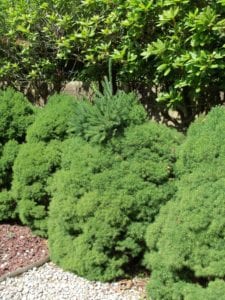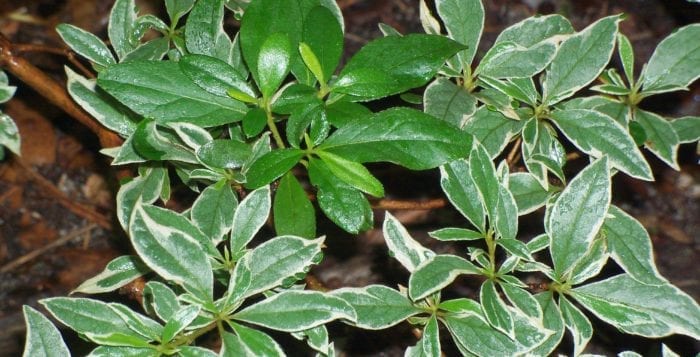By Ellen Barcel
Recently, I received a U.S. stamp with a couple of bright red pears pictured on it. The paperwork that came with the stamp noted that pear trees, along with apple trees, are noted for putting out sports.
Botanically, sports are genetic mutations that arise naturally in plants. And yes, pear and apple trees do put out sports, which can lead to new varieties of plants being developed. On a pear tree, which normally produces green pears, you may see a branch that has reddish pears. Or on an apple tree, you may find a branch that has larger or different colored apples.
Now, I’m not talking about trees that are grafted to produce more than one variety of fruit — you can see these advertised in magazines and gardening catalogs — but a tree that naturally produces one or more unusual branches and fruit. This is referred to as “throwing a sport.”
Certain plants are more prone to produce these genetic mutations than others. For example, hostas easily produce sports, leading to the literally hundreds of varieties of hostas on the market today, from tiny to enormous, variegated, bluish, etc.
When these sports are propagated, the new plants will resemble the sport, not the parent plant. Propagate the unusual hosta and you now have a new cultivar. Propagate the red pear sport and you now have an entire tree filled with those red pears.
But sometimes, these sports are not stable. They “revert to type,” that is, they revert to the genetic makeup of the original plant. It’s usually not the whole plant that reverts, but a small part of it. A branch will grow, for example, that looks just like the original plant.

Dwarf Alberta spruce (Picea glauca var. albertiana f. conica) is a lovely, slow-growing, compact coniferous evergreen, which as its name implies stays very small. It makes an ideal decorative plant and easily grows in tubs. Many people like them decorated at Christmas. The dwarf Alberta spruce is a naturally occurring mutation of white spruce. Yes, it can revert to type. A couple of years ago, I saw a walkway lined with them; and yes, there growing from the top of one was a branch that had reverted to type.
So, what do you do if you find a sport on one of your plants, or, a plant grown from a sport reverts to type? That depends on whether you like the appearance or not.
Ignore it. If you find that the sport, or the reversion, is pleasing, you can just ignore it. That’s what I did when my variegated azaleas began to revert to solid green leaves. The flowers are the same gorgeous ones on all the branches, and the reversion actually has larger green leaves than the variegated ones.
Remove it. If you don’t like the sport or the reversion, find it ruins the plant etc., you can simply prune it out. I could have done this with my azaleas, but as I said above, it didn’t affect the flowers and made the overall plant larger.
Propagate it. If you absolutely love the sport, you can attempt to cultivate it. Usually vegetative propagation is the best since a sport is a mutation, a change in the genes. For hostas, this usually means digging up the plant and dividing it, detaching the different variety. Make sure you have the roots with the division. Replant the original plant and plant the sport in a different location, giving it a new home. Commercial growers sometimes use tissue culture, but this is really a specialized group of techniques that is beyond the home gardener. If the plant with the sport is a woody one, you can try to take woody cuttings. Use rooting hormone and sterile soil for best results.
You can, of course, collect the seeds from any flowers that form on a sport and try to grow the sport from seed. Chances are that if the seeds are not sterile, you will get a wide range of results from the original plant to the sport. Growing from seed, however, is time consuming as many plants can take years of growth before they mature. Plants like the dwarf Alberta spruce generally don’t produce cones and, therefore, no seeds. So, growing from seed is very iffy.
Note that if you find a really different branch with totally different flowers, on say, a rose bush, trace it back to its origin. Chances are you will find that the branch goes all the way back to the ground. Chances are that this is a grafted plant and that those roots are sprouting, rather than the graft. Usually grafted plants are made up of a common root stock with a beautiful plant on top. Unless you absolutely love what’s growing on the root sprouts, remove them at the soil level, below the graft (the large bump on the stem just above soil level). This will send the energy of the plant into the beautiful graft rather than the common root stock.
Ellen Barcel is a freelance writer and master gardener. To reach Cornell Cooperative Extension of Suffolk County and its Master Gardener program, call 631-727-7850.





